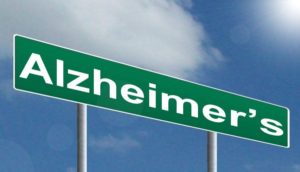 The hope that Alzheimer’s will one day be curable has in recent years faded to a flicker as successive clinical trials ended in failure. But the prospect of a treatment this week grew a little brighter as scientists uncovered a new and unexpected explanation for the development of the disease.
The hope that Alzheimer’s will one day be curable has in recent years faded to a flicker as successive clinical trials ended in failure. But the prospect of a treatment this week grew a little brighter as scientists uncovered a new and unexpected explanation for the development of the disease.
The latest study suggests that immune cells could be going rogue in the brain and contributing to the development of Alzheimer’s. Experiments on mice showed cells that normally protect the brain beginning to consume a vital nutrient called arginine as they progressed towards a state similar to Alzheimer’s.
By blocking this process with a drug, the team from Duke University in North Carolina were able to prevent the formation of plaques, which are the most visible indication of Alzheimer’s in the brain, and also halt memory loss in mice.
The discovery is one of a number of significant developments lifting a sense of pessimism created by years of deadlock. Between 2002 and 2012, 99.6% of drugs studies aimed at preventing, curing or improving Alzheimer’s symptoms were either halted or discontinued. The failure of so many trials, at astronomical financial cost, sent researchers back to the drawing board. This reassessment is finally beginning to pay off as scientists drill down into the basic physiological causes of Alzheimer’s.
Most of the drugs tested were designed to target the accumulation of sticky plaques, called beta-amyloids. It was wrongly thought that if these plaques were cleared from the system, symptoms would improve. There is now mounting evidence that by the time the plaques are visible, irreparable damage may have already been done: vital connections between brain cells will already have been severed, and neurons will have been lost for ever.
Scientists are gradually shifting their focus away from the visible plaques to make breakthroughs in our understanding of Alzheimer’s.
The discovery would fit with previous research in humans hinting that the immune system may play a role. Earlier this year, scientists found that people with diabetes, which affects the immune system, are 65% more likely to develop dementia, for instance. Another recent study found that Alzheimer’s patients whose immune systems consistently showed signs of infection had a fourfold greater decline in memory tests during a six-month period compared with patients with the lowest infection levels.
Studies such as this are starting to solve the mystery of what causes sticky proteins to accumulate in the first place, why neurons die out, and whether there are genetic markers that pinpoint which of us is at greatest risk of losing their memory in old age.
Before a declaration that the study marks a firm step towards a drug that achieves the same effect in humans, however, it is worth noting that “Alzheimer’s mice” are not a perfect parallel for what happens in human brains. Normally, laboratory mice can be made to have plaques, but not the two other main features: loss of connections and death of brain cells. This means it can be easier to reverse memory loss in mice than in humans, where the neurons holding memories have physically vanished.
Caveats aside, it is encouraging that scientists appear to be on the brink of understanding the causes of one of the most complex and destructive diseases we face. To cure Alzheimer’s, we first need to figure out why some of us are unlucky enough to get it.
Originally written by,
The Guardian
Article Source:

